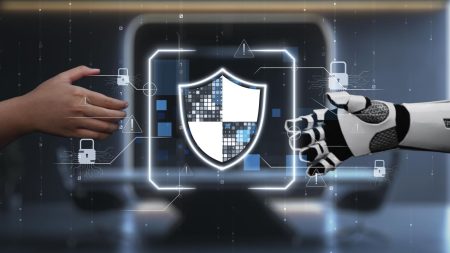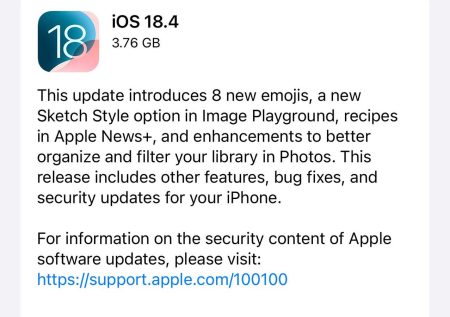The story of SignalGate is almost too surreal to be true—top U.S. officials discussing classified military operations in a Signal group chat, mistakenly adding a journalist to the thread, and then proceeding as if nothing could possibly go wrong. But it did. And what’s more troubling is that SignalGate seems to be just the tip of the digital iceberg.
As the fallout from this incident continues, the scandal has revealed significant failures of basic security principles that everyone should be aware of—but that White House cabinet members and government officials should absolutely abide by.
Seemingly innocuous bits of digital information—public Venmo friend lists, unguarded contact info, personal interactions—can serve as entry points for adversaries seeking to undermine national security.
SignalGate is just one symptom of a larger pattern of digital hygiene failures that form a breadcrumb trail that US adversaries are all too eager to follow.
From Signal to Systems Failure
When The Atlantic’s Jeffrey Goldberg published the now-infamous account of being added—accidentally and silently—to a Signal chat involving Vice President JD Vance, Secretary of Defense Pete Hegseth, Secretary of State Marco Rubio, and others, it sparked national outrage. The chat wasn’t just idle chatter—it included timestamped details about drone launches and missile strikes in Yemen. Goldberg, unaware of the gravity of what he was reading at first, later confirmed that he had a front-row seat to real-time discussions of imminent military action.
That was bad enough. But, learning that government officials are conducting sensitive communications on personal devices has driven media outlets around the world—and likely adversaries as well—to look into just how big the problem really is.
The Venmo Vectors and Open-Source Oversights
Following SignalGate, Wired reported that National Security Adviser Michael Waltz had his Venmo account set to public, exposing a network of 328 connections—including journalists, military officers, and government staffers. Among them: active members of the National Security Council. It’s not just about who paid whom for tacos or splitting a hotel bill—it’s about network mapping. Foreign intelligence services couldn’t ask for a more convenient way to build a social graph of top U.S. officials.
Meanwhile, The Hill cited a report from German outlet Der Spiegel, revealing that the private email addresses and phone numbers of Trump administration officials were publicly accessible online. The details weren’t stolen in a breach—they were simply there, ripe for harvesting. This kind of low-hanging fruit is precisely what threat actors thrive on. Once they have names, numbers, and connections, it’s only a few steps to phishing campaigns, impersonation, or social engineering attacks.
Why This Is Worse Than It Looks
It’s easy to laugh off a public Venmo account or an outdated contact list. But in the hands of a nation-state adversary or a well-funded cybercriminal syndicate, this data becomes a weapon. Here’s how:
- Social Graph Mapping: By analyzing who officials are connected to, adversaries can identify secondary targets who may have weaker defenses but high-value access—staffers, family members, assistants.
- Phishing with Context: A phishing email from a random sender is easy to ignore. One that appears to come from a known colleague or friend—referencing a recent payment or shared trip—is far more convincing.
- Credential Harvesting and Pivot Attacks: A compromised assistant’s inbox can lead to calendar invites, shared docs, or even credentials that open more sensitive systems. The attacker doesn’t start at the top—they work their way there, one trusted contact at a time.
- Extortion and Leverage: Knowing an official’s inner circle and routines gives adversaries ammunition for coercion—whether it’s exploiting embarrassing personal connections or threatening to expose operational lapses.
This isn’t speculation—it’s standard operating procedure for threat actors.
The Culture Problem Behind the Cyber Problem
The SignalGate scandal, combined with these broader exposures, reflects a culture problem.
We often think of cybersecurity as a technical discipline, but most breaches start with human error. Messaging apps like Signal are encrypted and secure—but only if used properly. Platforms like Venmo offer privacy settings—but only if configured correctly. Contact information can be protected—but only if someone cares enough to do it.
Unfortunately, too many public officials treat digital security as an afterthought—until it becomes a headline.
What’s more frustrating is that these missteps aren’t happening in isolation. They’re happening among the very people charged with protecting national interests. If senior government officials are casually sharing classified operations over apps and leaving their digital doors wide open, what hope is there for the rest of us?
What Needs to Happen Now
To prevent future incidents like SignalGate—or worse—several things need to happen:
- Mandatory Cyber Hygiene Training for Government Officials: If a mid-level employee at a tech company can be required to pass annual security training, so should every cabinet member and political appointee.
- Strict Communication Protocols: Government communications involving operational or classified content must be conducted through approved, monitored systems—not convenience-first consumer apps.
- Aggressive Open-Source Intelligence (OSINT) Audits: Officials should undergo regular reviews of their digital footprint to identify and remediate exposed information—before an adversary uses it.
- A Security-First Mindset: Cybersecurity cannot be relegated to IT departments. It must be part of every decision—from how apps are used to how networks are built and how people connect.
Every Breadcrumb Matters
SignalGate didn’t happen because of some masterful hack or a catastrophic zero-day exploit. It appears to have happened because someone fat-fingered a phone number. It’s a chilling reminder that even at the highest levels of power, the smallest mistakes can have enormous consequences.
Every bit of data—every contact, payment, message, or connection—is a piece of a puzzle. And once an adversary has enough of those pieces, they can see the whole picture clearly. Cybersecurity isn’t just about protecting secrets—it’s about protecting the ordinary details that, when combined, become extraordinary vulnerabilities.
Read the full article here









